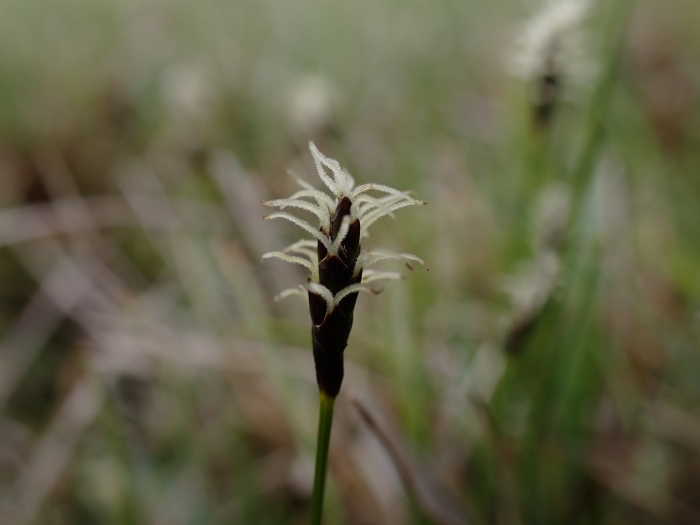Dioecious Sedge
(Carex dioica)
Dioecious Sedge (Carex dioica)
/
/

© Skjold Søndergaard
CC BY 4.0
Image By:
© Skjold Søndergaard
Recorded By:
Copyright:
CC BY 4.0
Copyright Notice:
Photo by: © Skjold Søndergaard | License Type: CC BY 4.0 | License URL: http://creativecommons.org/licenses/by/4.0/ | Uploader: skjoldalsted | Publisher: iNaturalist |






















Estimated Native Range
Summary
Carex dioica, commonly known as dioecious sedge, is a perennial herb native to a range of habitats including calcareous fens, wet meadows, and marshes across Iceland, the Faroe Islands, Svalbard, nearly all of Europe, western Siberia, and the Altai region. It is particularly adapted to wet, nutrient-rich, and often alkaline soils. Dioecious sedge is a small, tufted plant, typically reaching only 10-25 cm in height, with narrow, grass-like leaves. The species is notable for its separate male and female plants, a rare trait among sedges, which contributes to its unique reproductive strategy. The male and female flowers are borne on separate plants, with male flowers being more conspicuous with their yellow-brown color, while female flowers are greenish and less noticeable.
Dioecious sedge is valued for its ability to thrive in wetland conditions and is often used in the restoration of such habitats. It is also appreciated for its unique reproductive biology, which can be a point of interest in educational gardens or conservation projects. In cultivation, it requires consistently moist to wet soil conditions and can tolerate partial shade to full sun exposure. It is not commonly found in general garden use but can be an excellent choice for bog gardens, water features, or as part of a native plant collection. Care should be taken to provide adequate water, as the plant does not tolerate drought.CC BY-SA 4.0
Dioecious sedge is valued for its ability to thrive in wetland conditions and is often used in the restoration of such habitats. It is also appreciated for its unique reproductive biology, which can be a point of interest in educational gardens or conservation projects. In cultivation, it requires consistently moist to wet soil conditions and can tolerate partial shade to full sun exposure. It is not commonly found in general garden use but can be an excellent choice for bog gardens, water features, or as part of a native plant collection. Care should be taken to provide adequate water, as the plant does not tolerate drought.CC BY-SA 4.0
Plant Description
- Plant Type: Grass
- Height: 0.5-1 feet
- Width: 0.5-1 feet
- Growth Rate: Moderate
- Flower Color: N/A
- Flowering Season: Spring, Summer
- Leaf Retention: Deciduous
Growth Requirements
- Sun: Full Sun, Part Shade
- Water: Medium
- Drainage: Medium, Slow
Common Uses
Low Maintenance, Water Garden
Natural Habitat
Calcareous fens, wet meadows, and marshes
Other Names
Common Names: Bride’s Feathers
Scientific Names: , Carex dioica, Carex casteriana, Carex casteriana, Carex chlamydea, Carex custoriana, Carex custoriana, Carex dioica f. isogyna, Carex dioica f. laxa, Carex dioica f. metteniana
GBIF Accepted Name: